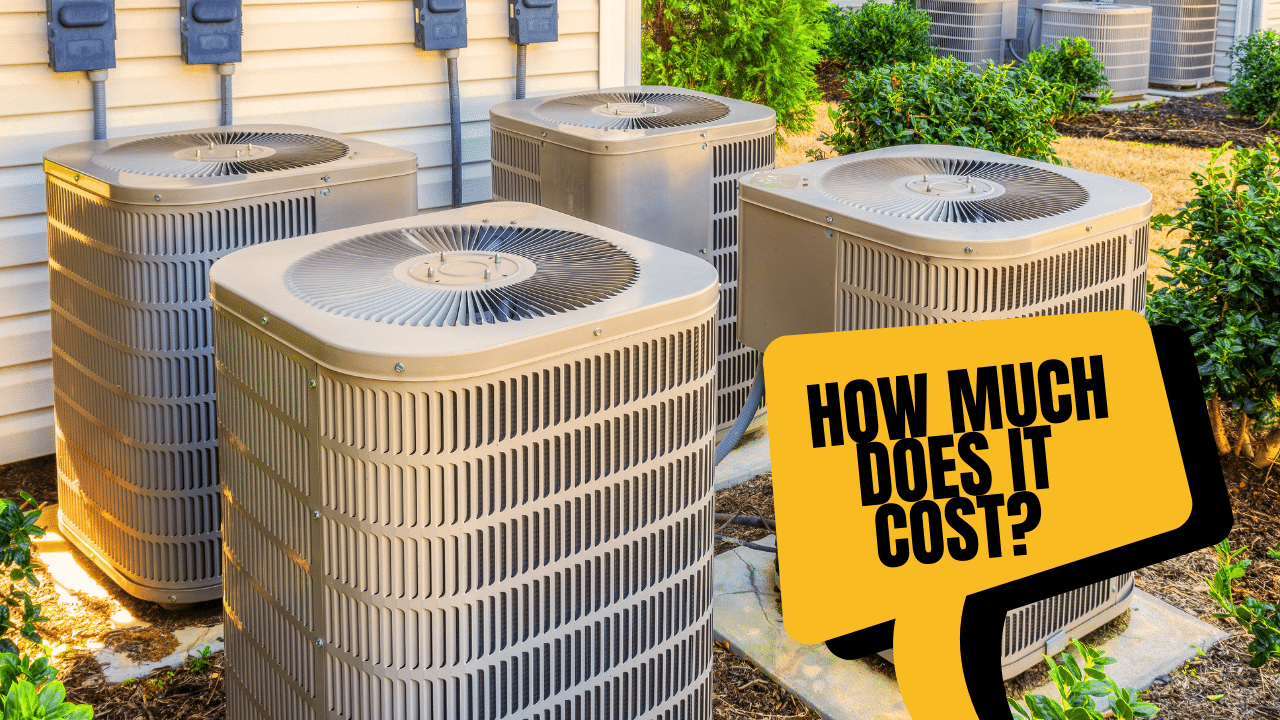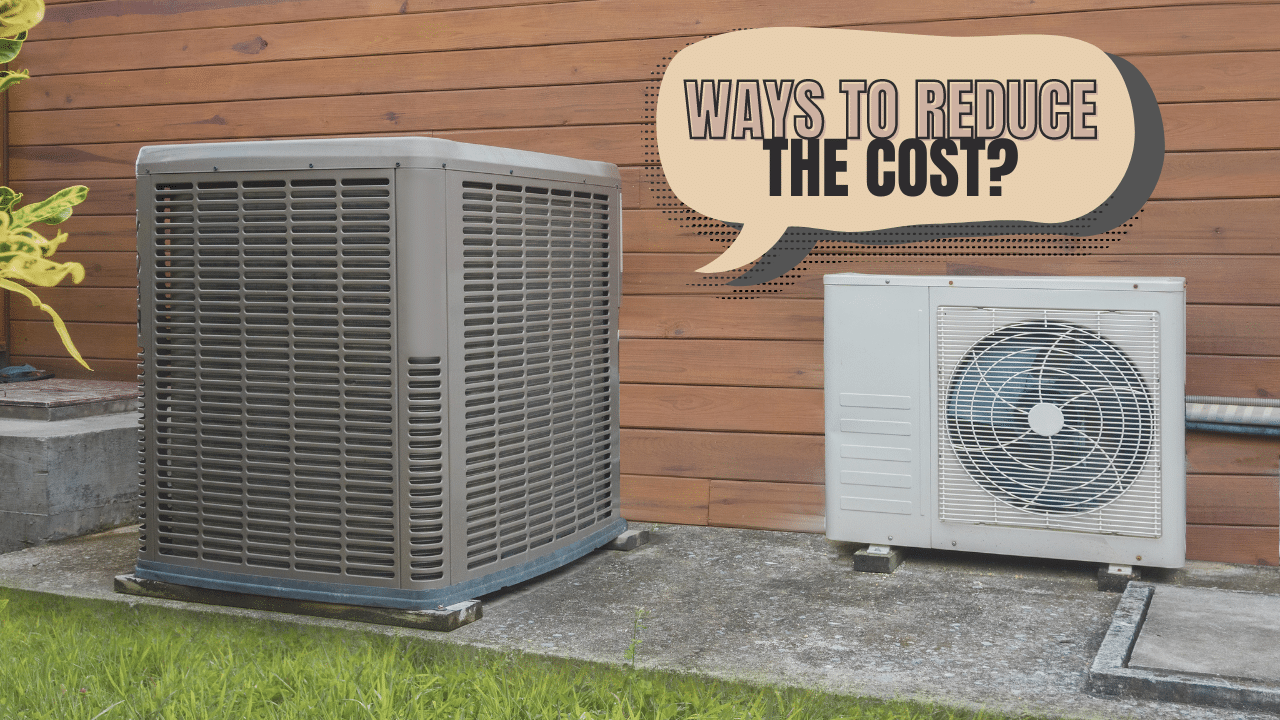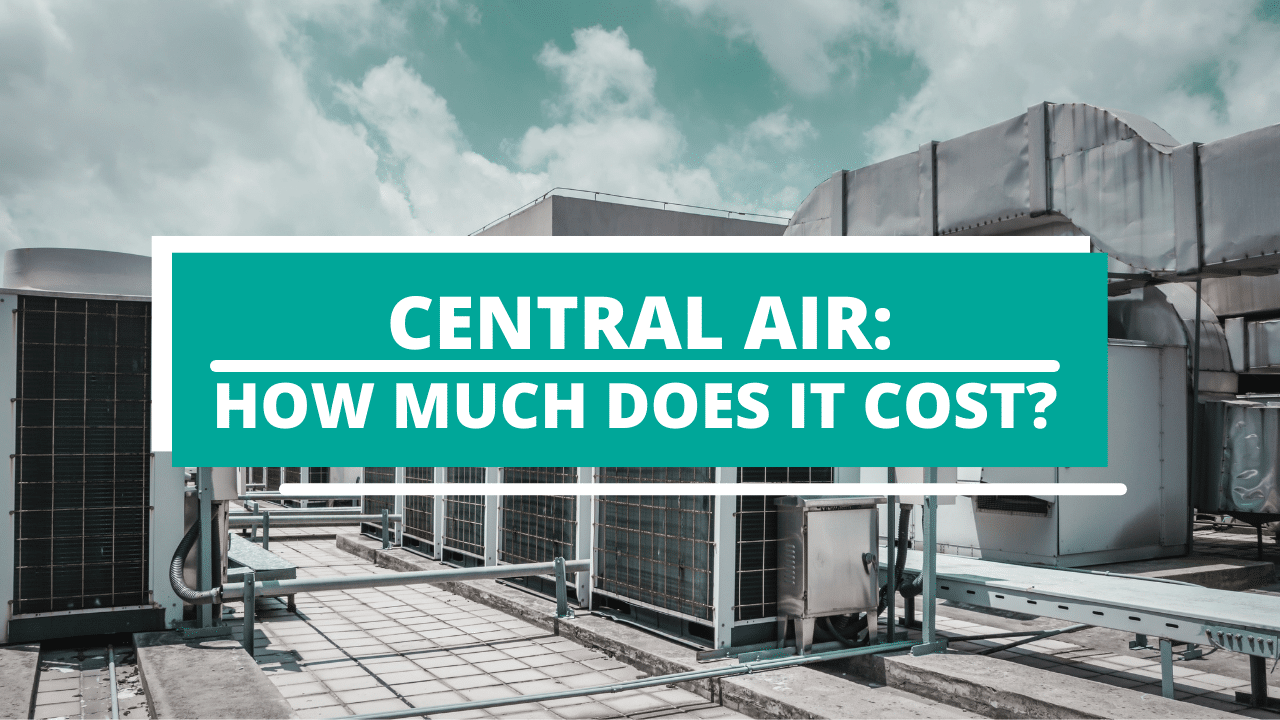Is your central air struggling to maintain a constant temperature throughout your 1200 square foot home? It might seem like a simple matter to resolve, but you may find that replacing all or part of the system is a better option than trying to get your existing system repaired. This might be a bit of a shock, especially for new homeowners who may not have realized when they purchased their home that their central air was on its last leg!
Don’t worry, though. In this article, we will go over the various costs associated with upgrading or installing new central air in your 1200 sq ft home. Working with your service technician will ensure that you get exactly what you need, while keeping your costs reasonable.
British Thermal Units (BTU) and Tons
When you’re shopping for new central air components, you will encounter a few different terms that can be confusing. We won’t get too deep into the technical details here, but it’s important to define these terms briefly so you can make the best decision for your home.
First, “BTU,” or “British Thermal Units.” It is the unit used to measure heat. The higher the BTU rating of an air conditioner, the stronger its cooling effect.
When you look at central air units, they will usually refer to both BTU and Tons (or tonnage). “Tons” doesn’t refer to how much the unit weighs. It refers to how many BTUs a unit can remove from your indoor space in an hour.
The general ratio of BTU to Tons in central air is: 12,000 BTU = 1 Ton.
Now, don’t be tempted into thinking more is better. If your central air system is too powerful for your needs, it will run on shorter, less efficient cycles. This can increase wear and tear on the unit itself as well as increasing your energy costs. It’s best to choose a central air system that is sized appropriately for your home.
In most areas of the United States, a 1200 sq ft house will usually do well with a 2-ton air conditioner. However, if your house is poorly insulated, if you live in the deep south, or if your home has multiple stories, you may need a 2.5 or even 3-ton unit.
Ask around with your neighbors and local friends who have similarly-sized homes and see what size unit their house has. This, coupled with discussions with your service technician, should give you a good idea about the best size for your home before you make the investment.

What are the Costs of Central Air Installation?
Now, let’s explore the costs of the different pieces of a central air system.
When you look at the price estimates in the following sections, keep in mind the cost of living in your area. And take note that costs might vary depending on if you’re installing just a central air unit, replacing your duct work, or both. (Related: HVAC Options To Control The Heating & Cooling Of Your Sunroom)
IMPORTANT NOTE: All of the costs in the following sections are estimated based on the needs of a 1200 sq ft home.
Local prices will vary. To get project specific free estimates, we recommend using Homeadvisor for free estimates. They have a great network of price competitive contractors that compete for your business. In our experience we have found lower prices, more professionalism and overall better value when using ANGI to get estimates and hire contractors (as opposed to dealing with contractors that are just 'too busy').
Labor
Let’s start with the cost of labor for installing new central air into your home. This will vary widely depending on your location and the complexity of the job. The general rule of thumb is “the cost of home repair labor usually correlates to the cost of living,” meaning that if you live in an area where the cost of living is low, you will pay less for labor than someone who lives in a high-cost area. And of course, the reverse is also true.
The cost of labor typically includes the wages of your technician as well as various other expenses incurred by the company, such as fueling and maintaining the service truck or van, maintaining service tools and equipment, insurance, and local business fees and certifications.
With all that said, labor for installing and servicing central air tends to run between $75-$200 per hour. Most installations take anywhere from three hours to sixteen hours. The more complex the job, the longer it will take.
This brings the cost of labor alone can run anywhere from $225 all the way up to $3200 and possibly higher.
Split Systems - Central Air with Heat Pump
Most homes with central air in the United States use what is known as a “split system.” That is, they have the central air unit (with condenser coil, fan, and compressor) located outside, and a separate heating unit (“the heat pump,” with the furnace or fan coil) located inside the home, along with tubing between the outdoor and indoor units for the refrigerant.
If you only need to replace the outdoor central air unit, you can refer to the information in the next section regarding that. Do keep in mind that if you have a split system, however, you may encounter some extra costs in labor to have your central air serviced.
The cost of an entirely new split system will, of course, vary depending on the heating and cooling needs of your home. The type of system you need will also depend on whether your home’s temperature is controlled solely with electricity, or if your heat pump will use a gas furnace.
Generally, the cost of split systems breaks down about like this:
- 1Air conditioner alone: $2200-$3000 plus labor
- 2Air conditioner & gas heat package unit: $2800-$4500 plus labor
- 3Air conditioner & electric heat pump package unit: $2800-$4200 plus labor
- 4Hybrid systems (electric heating and cooling with gas emergency heat): $3500-$5600 plus labor
Duct Work
First, let’s rip the band-aid off. If your home does not have existing duct work and you wish to have central air installed, you will need duct work retrofitted into your home. This can bring the cost of installing central air up to anywhere from $15,000 to $35,000. A local contractor will be able to give you a better idea of what your exact costs will be, but this is a good general ballpark estimate.
Unlike homes with ducts already built in, fitting ducts in an existing house often involves more extensive labor: cutting holes in walls, floors, and ceilings, ensuring proper insulation and support structures in attics, basements, and attics, and adjusting the wiring in your house to safely support the new energy load.
If your home already has duct work, but some or all of it needs to be replaced, you will want to work with your installer to choose the best materials for the location. Not all locations in your home need the same duct materials, and choosing the correct one will make sure your central air operates safely and efficiently.
Here is a basic rundown of the cost of duct work (including average installation costs):
- 1Flexible Non-Metallic: $10-$15 per linear foot
- 2Flexible Aluminum: $10-$18 per linear foot
- 3Fiberglass Duct Board: $10-$20 per linear foot
- 4Sheet Metal: $18-$25 per linear foot
The total cost of your duct work will depend on how much needs to be replaced. If you need your entire duct system replaced, this could cost anywhere from $1600-$5000, depending on the materials and the complexity of your installation.
Hidden Costs
While we can’t give exact numbers for any of the possible unexpected or hidden costs of installing central air in your 1200 sq ft home, here are some expenses that sometimes pop up that aren’t always included in technician estimates:
One area many homeowners are concerned about is the potential hidden cost of removing and recycling an old central air system. That is not something to worry about, however, as your service technician will take care of recycling of your old unit. This is because the chemicals in central air systems is hazardous to leave sitting around, and disassembling them requires more advanced equipment, expertise, and safety measures than most standard recycling centers will have.
Long-term Maintenance Costs for Various Systems
As a final note about the costs of central air, one thing to keep in mind is maintenance costs for your new unit. Regular maintenance (once or twice a year in most climates) keeps large costly repairs down, and it helps give you advance notice of future repairs that might be needed, so your central air system can last longer.
Maintenance costs for central air systems is almost always a simple labor cost, which, as we mentioned above, can be anywhere from $75-$200 an hour. Usually, routine maintenance of a central air system only takes a few hours, bringing the total cost of a maintenance visit to $75-$400.
If any parts need to be replaced, or if the refrigerant needs to be flushed and replenished, the labor costs will increase, and you will have to pay for the cost of replacing the necessary components.

Ways to Reduce the Cost of Central Air
Depending on your location, there may be rebates available on certain EnergyStar rated central air units. These can bring down the costs of your new equipment, either immediately, or as a deduction when you file your taxes.
While a new central air system may be a bit of an investment up front, investing in a more energy efficient model can reduce your energy costs over the long term as well.


